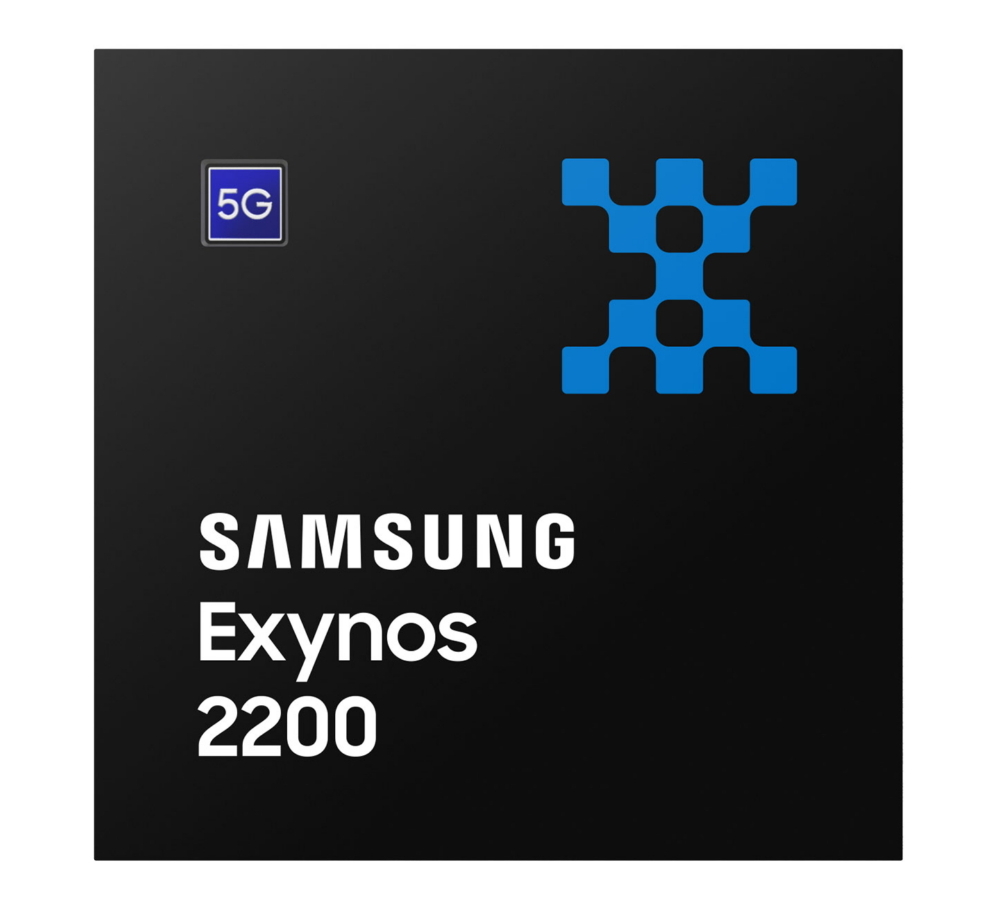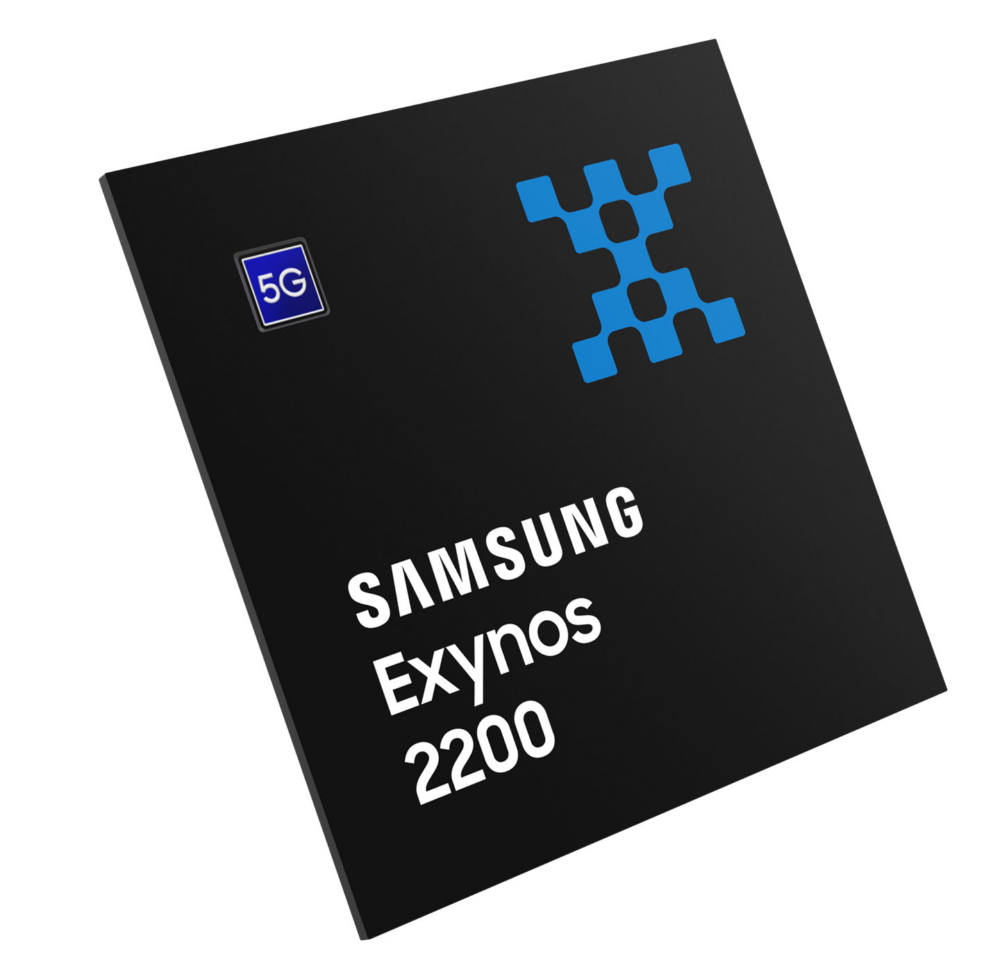Samsung Introduces Game Changing Exynos 2200 Processor With Xclipse GPU Powered By AMD RDNA 2 Architecture
The new pre┬Łmi┬Łum mobi┬Łle pro┬Łces┬Łsor comes with hard┬Łware-acce┬Łle┬Łra┬Łted ray tra┬Łcing and sta┬Łte of the art Arm-based pro┬Łces┬Łsing technology
Sam┬Łsung Elec┬Łtro┬Łnics, a world lea┬Łder in advan┬Łced semi┬Łcon┬Łduc┬Łtor tech┬Łno┬Łlo┬Łgy, today announ┬Łced its new pre┬Łmi┬Łum mobi┬Łle pro┬Łces┬Łsor, the Exy┬Łnos 2200. The Exy┬Łnos 2200 is a fresh┬Łly desi┬Łgned mobi┬Łle pro┬Łces┬Łsor with a powerful AMD RDNA 2 archi┬Łtec┬Łtu┬Łre based Sam┬Łsung Xclip┬Łse gra┬Łphics pro┬Łces┬Łsing unit (GPU). With the most cut┬Łting-edge Arm┬«-based CPU cores available in the mar┬Łket today and an upgraded neu┬Łral pro┬Łces┬Łsing unit (NPU), the Exy┬Łnos 2200 will enable the ulti┬Łma┬Łte mobi┬Łle pho┬Łne gam┬Łing expe┬Łri┬Łence, as well as enhan┬Łcing the over┬Łall expe┬Łri┬Łence in social media apps and photography.
ŌĆ£Built on the most advan┬Łced 4ŌĆænanometer (nm) EUV (extre┬Łme ultra┬Łvio┬Łlet litho┬Łgra┬Łphy) pro┬Łcess, and com┬Łbi┬Łned with cut┬Łting-edge mobi┬Łle, GPU and NPU tech┬Łno┬Łlo┬Łgy, Sam┬Łsung has craf┬Łted the Exy┬Łnos 2200 to pro┬Łvi┬Łde the finest expe┬Łri┬Łence for smart┬Łphone users. With the Xclip┬Łse, our new mobi┬Łle GPU built with RDNA 2 gra┬Łphics tech┬Łno┬Łlo┬Łgy from the indus┬Łtry lea┬Łder AMD, the Exy┬Łnos 2200 will rede┬Łfi┬Łne mobi┬Łle gam┬Łing expe┬Łri┬Łence, aided by enhan┬Łced gra┬Łphics and AI per┬Łfor┬Łmance,ŌĆØ said Yon┬Łgin Park, Pre┬Łsi┬Łdent of Sys┬Łtem LSI Busi┬Łness at Sam┬Łsung Elec┬Łtro┬Łnics. ŌĆ£As well as brin┬Łging the best mobi┬Łle expe┬Łri┬Łence to the users, Sam┬Łsung will con┬Łti┬Łnue its efforts to lead the jour┬Łney in logic chip innovation.ŌĆØ
The IndustryŌĆÖs First Hardware-Accelerated Ray Tracing on Mobile for the Ultimate Gaming Experience
The Xclip┬Łse GPU is a one-of-a-kind hybrid gra┬Łphic pro┬Łces┬Łsor that is posi┬Łtio┬Łned bet┬Łween the con┬Łso┬Łle and the mobi┬Łle gra┬Łphic pro┬Łces┬Łsor. Xclip┬Łse is the com┬Łbi┬Łna┬Łti┬Łon of ŌĆśXŌĆÖ that repres┬Łents Exy┬Łnos, and the word ŌĆśeclip┬ŁseŌĆÖ. Like an eclip┬Łse, the Xclip┬Łse GPU will bring an end to the old era of mobi┬Łle gam┬Łing and mark the start of an exci┬Łting new chapter.
With the high-per┬Łfor┬Łmance AMD RDNA 2 archi┬Łtec┬Łtu┬Łre as its back┬Łbone, the Xclip┬Łse inhe┬Łrits advan┬Łced gra┬Łphic fea┬Łtures such as hard┬Łware acce┬Łle┬Łra┬Łted ray tra┬Łcing (RT) and varia┬Łble rate shad┬Łing (VRS) that were pre┬Łvious┬Łly only available on PCs, lap┬Łtops and consoles.
Ray tra┬Łcing is a revo┬Łlu┬Łtio┬Łna┬Łry tech┬Łno┬Łlo┬Łgy that clo┬Łse┬Łly simu┬Łla┬Łtes how light phy┬Łsi┬Łcal┬Łly beha┬Łves in the real world. By cal┬Łcu┬Łla┬Łting the move┬Łment and the color cha┬Łrac┬Łte┬Łristic of light rays as they boun┬Łce off the sur┬Łface, ray tra┬Łcing pro┬Łdu┬Łces rea┬Łli┬Łstic light┬Łing effects for gra┬Łphi┬Łcal┬Łly ren┬Łde┬Łred sce┬Łnes. To offer the most immersi┬Łve gra┬Łphics and user expe┬Łri┬Łen┬Łces even on mobi┬Łle, Sam┬Łsung has col┬Łla┬Łbo┬Łra┬Łted with AMD to rea┬Łli┬Łze the industryŌĆÖs first ever hard┬Łware-acce┬Łle┬Łra┬Łted ray tra┬Łcing on mobi┬Łle GPU.
Varia┬Łble rate shad┬Łing is a tech┬Łni┬Łque that opti┬Łmi┬Łzes GPU workload by allo┬Łwing deve┬Łlo┬Łpers to app┬Łly lower shad┬Łing rate in are┬Łas whe┬Łre over┬Łall qua┬Łli┬Łty will not be affec┬Łted. This gives GPU more room to work on are┬Łas that mat┬Łter most to the gamers and impro┬Łve frame-rate for smoot┬Łher gameplay.
In addi┬Łti┬Łon, the Xclip┬Łse GPU comes with various tech┬Łno┬Łlo┬Łgies such as advan┬Łced mul┬Łti-IP gover┬Łnor (AMIGO) that enhan┬Łce over┬Łall per┬Łfor┬Łmance and efficiency.
ŌĆ£AMD RDNA 2 gra┬Łphics archi┬Łtec┬Łtu┬Łre extends power-effi┬Łci┬Łent, advan┬Łced gra┬Łphics solu┬Łti┬Łons to PCs, lap┬Łtops, con┬Łso┬Łles, auto┬Łmo┬Łbi┬Łles and now to mobi┬Łle pho┬Łnes. SamsungŌĆÖs Xclip┬Łse GPU is the first result of mul┬Łti┬Łple plan┬Łned gene┬Łra┬Łti┬Łons of AMD RDNA gra┬Łphics in Exy┬Łnos SoCs,ŌĆØ said David Wang, Seni┬Łor Vice Pre┬Łsi┬Łdent of Rade┬Łon Tech┬Łno┬Łlo┬Łgies Group at AMD. ŌĆ£We canŌĆÖt wait for mobi┬Łle pho┬Łne cus┬Łto┬Łmers to expe┬Łri┬Łence the gre┬Łat gam┬Łing expe┬Łri┬Łen┬Łces based on our tech┬Łno┬Łlo┬Łgy collaboration.ŌĆØ
Enhanced 5G Connectivity and Ironclad Security Features
The Exy┬Łnos 2200 is one of the first in the mar┬Łket to inte┬Łgra┬Łte ArmŌĆÖs latest Armv9 CPU cores which offer a sub┬Łstan┬Łti┬Łal impro┬Łve┬Łment over Armv8 in terms of secu┬Łri┬Łty and per┬Łfor┬Łmance, the two are┬Łas that are beco┬Łming cri┬Łti┬Łcal┬Łly important in todayŌĆÖs mobi┬Łle com┬Łmu┬Łni┬Łca┬Łti┬Łons devices.
The octa-core CPU of Exy┬Łnos 2200 is desi┬Łgned in a tri-clus┬Łter struc┬Łtu┬Łre made up of a sin┬Łgle powerful Arm Cor┬Łtex┬«-X2 flag┬Łship-core, three per┬Łfor┬Łmance and effi┬Łci┬Łen┬Łcy balan┬Łced Cor┬Łtex-A710 big-cores and four power-effi┬Łci┬Łent Cor┬Łtex-A510 little-cores.
ŌĆ£The digi┬Łtal expe┬Łri┬Łen┬Łces of tomor┬Łrow requi┬Łre new levels of per┬Łfor┬Łmance, secu┬Łri┬Łty and effi┬Łci┬Łen┬Łcy,ŌĆØ said Rene Haas, Pre┬Łsi┬Łdent of IP Pro┬Łducts Group (IPG) at Arm. ŌĆ£As one of the first pro┬Łces┬Łsors to incor┬Łpo┬Łra┬Łte the new Armv9 CPU cores, SamsungŌĆÖs Exy┬Łnos 2200 takes advan┬Łta┬Łge of ArmŌĆÖs Total Com┬Łpu┬Łte stra┬Łtegy and key secu┬Łri┬Łty fea┬Łtures, like Memo┬Łry Tag┬Łging Exten┬Łsi┬Łon (MTE), to deli┬Łver the pur┬Łpo┬Łse-built com┬Łpu┬Łte and spe┬Łcia┬Łli┬Łzed pro┬Łces┬Łsing nee┬Łded to power future mobi┬Łle experiences.ŌĆØ
The Exy┬Łnos 2200 offers more powerful on-device arti┬Łfi┬Łci┬Łal intel┬Łli┬Łgence (AI) with an upgraded NPU. The NPUŌĆÖs per┬Łfor┬Łmance has dou┬Łbled com┬Łpared to its pre┬Łde┬Łces┬Łsor, allo┬Łwing more cal┬Łcu┬Łla┬Łti┬Łons in par┬Łal┬Łlel and enhan┬Łcing the AI per┬Łfor┬Łmance. The NPU now offers much hig┬Łher pre┬Łcis┬Łi┬Łon with FP16 (16bit floa┬Łting point) sup┬Łport in addi┬Łti┬Łon to power effi┬Łci┬Łent INT8 (8bit inte┬Łger) and INT16.
Also, the Exy┬Łnos 2200 inte┬Łgra┬Łtes a fast 3GPP Release 16 5G modem sup┬Łport┬Łing both sub-6GHz and mmWa┬Łve (mil┬Łli┬Łme┬Łter Wave) spec┬Łtrum bands. With EŌĆæUTRAN New Radio ŌĆō Dual Con┬Łnec┬Łti┬Łvi┬Łty (EN-DC), which uti┬Łli┬Łzes both 4G LTE and 5G NR signals, the modem can boost the speed up to 10Gbps.
For safe┬Łkee┬Łping, the Exy┬Łnos 2200 comes with Inte┬Łgra┬Łted Secu┬Łre Ele┬Łment (iSE) to store pri┬Łva┬Łte cryp┬Łto┬Łgra┬Łphic keys as well as to play a role as RoT (Root of Trust). Also, an inline encryp┬Łti┬Łon HW for UFS and DRAM has been rein┬Łforced to have user data encryp┬Łti┬Łon safe┬Łly shared only within the secu┬Łre domain.
Providing Enhanced Visual Experience and Professional-Level Quality Images
The Exy┬Łnos 2200ŌĆÖs image signal pro┬Łces┬Łsor (ISP) archi┬Łtec┬Łtu┬Łre has been rede┬Łsi┬Łgned to sup┬Łport the latest image sen┬Łsors for ultra-high reso┬Łlu┬Łti┬Łon of up to 200 mega┬Łpi┬Łxel (MP). At 30 frames-per-second (fps), the ISP sup┬Łports up to 108 MP in sin┬Łgle came┬Łra mode, and 64+36 MP in dual came┬Łra mode. It can also con┬Łnect up to seven indi┬Łvi┬Łdu┬Łal image sen┬Łsors and dri┬Łve four con┬Łcurr┬Łent┬Łly for advan┬Łced mul┬Łti-came┬Łra set┬Łups. For video recor┬Łding, the ISP sup┬Łports up to 4K HDR (or 8K) resolution.
Tog┬Łe┬Łther with the NPU, the ISP uti┬Łli┬Łzes an advan┬Łced con┬Łtent-awa┬Łre AI came┬Łra for more refi┬Łned and rea┬Łli┬Łstic results. When taking a pho┬Łto┬Łgraph, the machi┬Łne lear┬Łning based AI came┬Łra reco┬Łgni┬Łzes mul┬Łti┬Łple objects, the envi┬Łron┬Łment and faces within the sce┬Łne. It then appli┬Łes opti┬Łmal set┬Łtings for color, white balan┬Łce, expo┬Łsure, dyna┬Łmic ran┬Łge and more to pro┬Łdu┬Łce pro┬Łfes┬Łsio┬Łnal-level qua┬Łli┬Łty images.
With 8K reso┬Łlu┬Łti┬Łon sup┬Łport, the Exy┬Łnos 2200ŌĆÖs advan┬Łced mul┬Łti-for┬Łmat codec (MFC) makes vide┬Łos tru┬Łly come to life. It decodes vide┬Łos up to 4K at 240fps or 8K at 60fps and encodes up to 4K at 120fps or 8K at 30fps. In addi┬Łti┬Łon, the MFC inte┬Łgra┬Łtes power effi┬Łci┬Łent AV1 deco┬Łder enab┬Łling lon┬Łger play┬Łback time. The advan┬Łced dis┬Łplay solu┬Łti┬Łon fea┬Łtures HDR10+ adding more dyna┬Łmic ran┬Łge and depth to the pic┬Łtu┬Łre and offers refresh rates of up to 144Hz for a more respon┬Łsi┬Łve and smoot┬Łher tran┬Łsi┬Łtio┬Łning expe┬Łri┬Łence when scrol┬Łling or play┬Łing games.
The Exy┬Łnos 2200 is curr┬Łent┬Łly in mass pro┬Łduc┬Łtion. Click here to learn more about the Exy┬Łnos 2200.
For more infor┬Łma┬Łti┬Łon about SamsungŌĆÖs Exy┬Łnos pro┬Łducts, plea┬Łse visit http://www.samsung.com/exynos.
* Actu┬Łal per┬Łfor┬Łmance may vary depen┬Łding on device and user environment.


